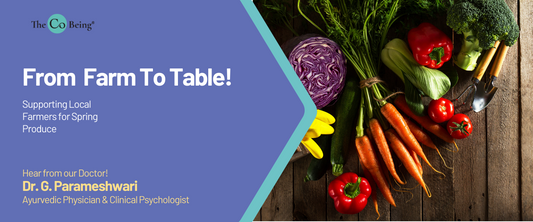Tips & Tricks!
Let's kickstart our journey to healthier living with the very first meal of the day – breakfast! This isn't just about food; it's about fuelling up for all the adventures ahead. In our quest for better habits, we're diving into a weekly diet plan that's like a food rainbow – vibrant, varied, and full of goodness.
Ever wondered about the ultimate food debate – what's good, what's a no-go? It's like a delicious puzzle! Fats, veggies, and more – they all bring something special to the table, literally! Join the tasty ride as we explore the world of healthy eating habits, making wellness a scrumptious affair.
What is the importance of healthy eating habits?
Healthy eating habits are essential for preventing various chronic diseases such as heart disease, diabetes, and cancer. It involves choosing a variety of foods and limiting the intake of salt, sugars, saturated fats, and trans-fats. A balanced diet includes key nutrients like proteins, carbohydrates, fats, vitamins, and minerals, and maintaining a good balance of these elements is crucial for overall health and well-being. Here's a bit more detail on each nutrient and how they contribute to a healthy diet:
Protein:
- Role: Essential for building and repairing tissues, enzymes, hormones, and other body chemicals.
- Sources: Lean meats, poultry, fish, eggs, dairy, legumes, nuts, seeds, tofu, and tempeh.
Fat:
- Role: Important for energy, cell function, absorbing certain vitamins, and maintaining healthy skin and hair.
- Sources: Healthy fats come from avocados, nuts, seeds, olive oil, fatty fish (salmon, mackerel), and coconut oil.
Carbohydrates:
- Role: Primary energy source for the body, especially for the brain and muscles.
- Sources: Whole grains (brown rice, quinoa, whole wheat), fruits, vegetables, legumes, and starchy vegetables (sweet potatoes, squash).
Vitamins:
- Role: Essential for various bodily functions, such as immune function, vision, bone health, and cell production.
- Sources: Found in a variety of foods, including fruits, vegetables, dairy, whole grains, nuts, seeds, and fortified foods.
Minerals:
- Role: Vital for building strong bones and teeth, regulating metabolism, and aiding in nerve function.
- Sources: Foods like leafy greens (spinach, kale), dairy, nuts, seeds, legumes, whole grains, seafood, and fortified foods.
Balancing these nutrients based on individual needs, lifestyle, and health goals is essential. For example, athletes or individuals with high activity levels might need more protein and carbohydrates for energy and muscle repair. Consulting with a healthcare professional or a registered dietitian can help create a personalized plan to meet specific dietary needs and goals. Adjusting portions and types of foods within these categories allows for a flexible and sustainable approach to a balanced diet (Source).
Some of the superfoods to recharge yourself:
A well-rounded diet that includes dairy, nuts, grains, and legumes can contribute to generating the necessary energy levels while providing a good mix of nutrients, fibers, and healthy fats to support your health goals. These recipes allow for flexibility in adjusting ingredients based on your taste preferences and dietary needs.
Mindful eating
Mindful eating is a practice centred around paying deliberate attention to the eating experience.
Sight: Notice the colours, shapes, and arrangement of your food.
Smell: Take a moment to appreciate the aroma of your meal.
Touch: Feel the textures of the food with your fingertips or in your mouth.
Taste: Savour the flavours and take time to identify different tastes.
Use the “20/20” rule. Try chewing each bite at least 20 times before swallowing and take at least 20 minutes to enjoy your meal.
Chewing foods well helps you to digest your food better – which means less gas and bloating.
Turn off screens and avoid multitasking while eating. Focus solely on your meal.
Be aware of your thoughts and bring your attention back to the meal if your mind wanders.
Pay attention to hunger and fullness cues. Stop eating when you're comfortably satisfied, not overly full.
Tune in to your body's signals of hunger and satiety, rather than finishing what's on your plate out of habit.
Be grateful for the food you have and appreciate the effort that went into preparing it.
Acknowledge where your food comes from and the journey it took to reach your plate.
Key takeaway
-
The significance of a balanced diet comprising various nutrients such as protein, fat, carbohydrates, vitamins, and minerals.
-
This balanced intake aids in preventing chronic illnesses like heart disease, diabetes, and cancer.
-
Superfoods that recharge quickly like overnight oats, berry blast smoothies, homemade trail mix, raw veggie wraps, and no-fry fried rice offer nutritious options.
-
Mindful eating encourages being present during meals and fosters a healthier relationship with food. These practices collectively contribute to a healthy lifestyle and well-being.
For further guidance on your food choices, Book Your FREE CONSULTATION With Our Expert Dr! or WhatsApp us on +91 9500775666 to schedule your consultation right away!





